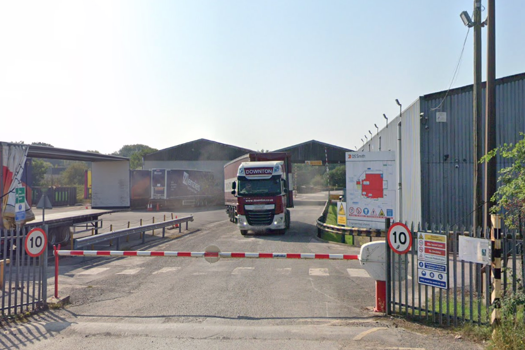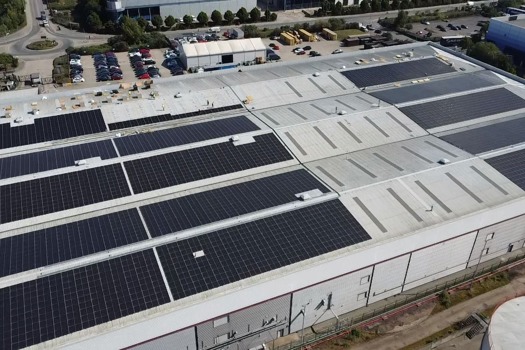Picking the best print technology isn’t simple, and, according to Frank Romano, professor emeritus at Rochester Institute of Printing, just pitching inkjet against toner is also too simplistic. Romano advises you be specific about the type of substrate; whether output is roll or sheetfed; the type of toner or inkjet technology; the intended application; the print volume; and whether spot colour or personalisation are needed. Speed and sheet size are also crucial considerations. Penetration into each sector, be it high-volume transactional documents or high-quality short-run jobs, should be looked at independently.
Relatively immature, inkjet still has limitations, which is why it’s yet to dominate the digital sector. However, there are already markets, in particular wide-format display graphics, where it has largely supplanted screen-printing.
The next markets predicted to fall to inkjet are those today dominated by continuous-feed toner-based technology. Steve Wilson, Océ UK production business unit director, says: Transactional and direct mail is where we see inkjet replacing toner overprinting of litho-printed shells and in graphic arts for book printing and other offset replacement.
Transition period
Wilson adds: The last 20 years belonged to toner, the next 20 will belong to inkjet. But there will be a five-year transition.
He says that only now is drop-on-demand inkjet kit from the likes of Océ, Screen, Infoprint and HP offering the quality and productivity to make inkjet a challenger. High-speed inkjet investments may be counted in the millions of pounds, but suppliers dismiss the high upfront hardware costs as irrelevant compared with the much lower per-copy cost offered by the technology.
Xerox offers its toner-based 490/980 platform for the continuous-feed sector, and says printers should ask whether they have the volumes to fill a top-spec inkjet machine. Kevin O’Donnell, Xerox marketing manager, production colour solutions, says: For these machines, you need to have contracted work in place. You need a number of big contracts to deliver millions of pages per month.
One firm that fits the bill is communications group Adare, which is preparing to invest in continuous-feed inkjet for its Park Mill, Huddersfield site in November. There are only a handful of companies that have the scale to buy inkjet and the workflow and market understanding to drive the applications, says sales director Steve Williams. The firm already runs high volumes of personalised colour on iGen3s, but admits that toner restricts the speed and range of formats it can offer.
We believe the speed will be three to four times that of current toner machines, he says. The firm’s initial inkjet investment will be around £4m for the hardware, with a further £500,000 to beef up its workflow.
Sheetfed is a different story, for now. One of the biggest developments at Drupa was the arrival of larger-format inkjet machines with Fuji’s B2 sheetfed Jet Press 720, Screen’s B2 Truepress Jet SX, and HP’s Inkjet Web Press. All were welcome developments, even if not quite enough information has been provided to judge just yet. Lawrence Dalton, managing director of London-based short-run specialist 1st Byte, took members of his team to see the machines. We’re interested in the Fuji – a competitive machine on 2,000 B2 sheets would be significant. If you could compete on cost, a lot more work would go digital.
Dalton can see the benefits of the B2 format, even though he concedes the toner vendors’ arguments that if toner could compete with inkjet on up to 4,000 B3 sheets, much of the advantage would be lost. And he’s yet to be convinced any inkjet can match the quality of the HP Indigos he runs today. If you could replicate the quality of desktop inkjet machines, that would be brilliant, but the HP Web was only suitable for transactional stuff, not the work we do. If they could improve the quality, we’d be interested, he says. I reckon it will be at least four years until inkjet encroaches on the Indigo from an economy and quality point of view.
Speed or size?
Romano believes B2 digital is inevitable, due to available paper sizes, working practices and post-press kit. Toner faces a challenge to work in the larger format, and as such inkjet is likely to be the digital choice. According to Erwin Busselot, Kodak EAMER marketing director digital printing, it’s an engineering challenge. There’s always the question of whether you go for speed or size. Most companies went for speed: it’s faster and easier to do.
He doubts there will be a B2 toner machine any time soon, but says the high-quality cut-sheet market is better served by toner in the immediate future. I don’t see inkjet pushing toner machines out of the market unless it becomes so cheap and reliable that it’s a no-brainer.
Kodak is committed to the toner-based Nexpress range and its continuous inkjet technology Stream, which, with its speed, cost and quality expectations, is positioned to challenge high-volume offset rather than toner. HP is committed to larger formats for inkjet and toner, although it is always at pains to point out its liquid toner ElectroInk is a world away in terms of quality and flexibility from dry toner technologies.
With several years of R&D, it is possible to develop a B2 digital press using either technology, says HP European director of marketing Francois Martin. But digital adoption has to grow in smaller formats first. We see wider format and higher productivity both for ElectroInk for high-quality, high-value pages and thermal inkjet for transpromo, books and direct mail.
Toner may dominate the cut-sheet market today, there are signs that inkjet may attack from all sides. There are a colossal number of inkjet machines on our desktops and it’s hard not to see inkjet acting in a pincer movement on the rest of the market, says Wilson.
What is termed ‘light production’ – cut-sheet machines faster than 40 A4ppm that cost around £50,000-£100,000 – could be the next market where inkjet grapples with toner, potentially pushing down both machine and consumables costs. Some commentators expressed surprise that there were no inkjet products that fitted that bill at Drupa. But there are signs it won’t be long before there are. HP has said that it will utilise its Scalable Printing Technology, which uses thermal inkjet, in future light production products. The firm won’t reveal further details, but RIT’s Romano says five systems are in development, suggesting it won’t be long until toner feels a squeeze from below as well as above.
CASE STUDY: DSICMM
Dsicmm is a UK pioneer in high-volume personalisation with its well-known ticket book for TUI produced on the country’s first Xerox iGen3. More recently, it has moved into even higher-volume personalised print, in part via its investment in an Infoprint Solutions 5000 high-speed continuous-feed colour inkjet press. One of the first jobs run on the machine was
a personalised investment update for financial services firm M&G, which incorporates statements, graphics showing fund performance and commentary on individual investments. It produced a total of 450,000 packs ranging from 8-64pp in a fortnight. Switching to the integrated booklet reduced environmental impact and costs with the average pack weight down by 90g saving postage costs and using 40 tonnes less paper.
The success of the project hinged on the much lower cost per page and higher speed of continuous-feed inkjet over cut-sheet toner printing. We’d have needed eight iGen3s dedicated to it rather than the one Infoprint 5000, says managing director Andy Young. However, he highlights that inkjet isn’t perfect. M&G was fit for purpose and was designed that way: we made sure there weren’t lots of images in the document, and it looks like inkjet and not the finest quality litho.
Therefore, he sees that his firm needs to run toner machines from Xerox and HP alongside the Infoprint inkjet for the near future.









